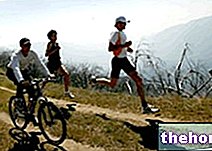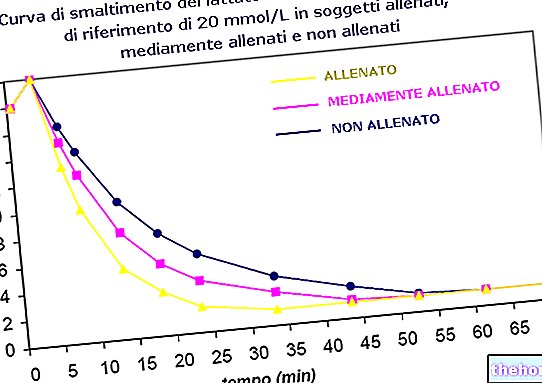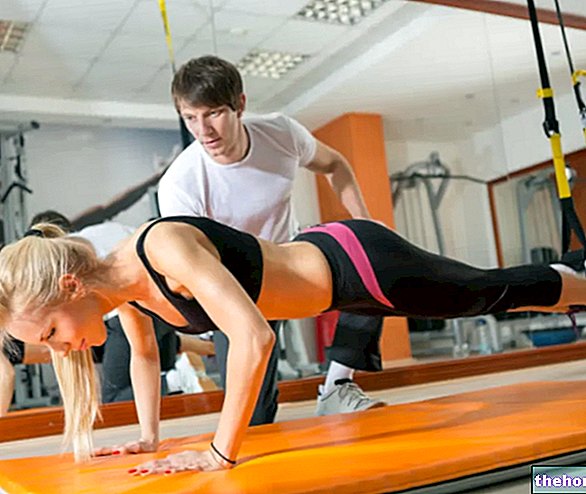Endurance training aims to increase the athlete's ability to sustain a certain effort for a long time, without causing a decrease in performance level. In relation to the duration, intensity and movement required, different training programs will be structured.
Aerobic Endurance Training Methods
Aerobic training aims to improve the transport capacity and use of oxygen, and to ensure optimal management of the energy substrates. The functional adaptations mainly involve the cardiovascular system (increase in the capillary bed, cardiac cavities, range systolic) and musculoskeletal (specialization of muscle fibers, which are enriched with mitochondria, oxidative enzymes and myoglobin, and improve the ability to use oxygen and energy substrates to produce energy). The result is an increase in aerobic capacity and maximum oxygen consumption.
Among the conditional skills, aerobic endurance is undoubtedly the one that can improve the most with training, because it is less linked to genetic factors. This improvement can be obtained at any age, with enormous benefits on health and quality of life; the advantages of aerobic training (regular and of sufficient intensity) include:
- prevention and treatment of cardiovascular diseases;
- body weight control;
- prevention and treatment of diabetes and hypercholesterolemia;
- improved bone trophism, lower risk of osteoporosis;
- improvement of muscle efficiency;
- lower risk of some types of cancer;
- improved mood and feeling of well-being (thanks to the release of endorphins).
To significantly improve aerobic endurance, however, a fairly long period is necessary (at least 2-4 months in a sedentary); on the other hand, we must not forget that the results obtained last a long time (we are talking about months and even years for well trained athletes). Consistency is fundamental: 40 minutes three times a week are the minimum to take full advantage of the benefits offered by endurance motor activity.
A high oxygen consumption is an undoubted advantage even in disciplines in which aerobic endurance plays an important role (cycling, swimming and endurance running, cross-country skiing, etc.). Obviously, the methods to improve it vary according to the degree of individual training, motivation and goals set.
CONTINUOUS METHODS: to be carried out without interruptions and at a constant speed
LONG, SLOW AND VERY LONG
The most classic form of aerobic training consists in maintaining a given effort for a certain period of time; in reference to the race it proceeds without interruptions and at a constant pace.
The "intensity" must be calibrated to the performance level of the "individual. It is therefore useless to talk about subjective parameters, such as speed; on the contrary, it is necessary to consider references that are valid for all, among which the most used is the heart rate.
In order for the cardiorespiratory system to work with maximum efficiency and the organism to be stimulated to increase its aerobic endurance, it is necessary to train between 65 and 90% of the theoretical maximum heart rate (HR Max).
For example, using Cooper's formulas, the optimal aerobic zone calculation for a 35-year-old male is:
Maximum heart rate: 220-age = 185 beats per minute (Bpm).
65% of 185 (0.65 x 185) is 120 Bpm
90% of 185 (0.90 x 185) is 167 Bpm.
When training, the 35-year-old in question will therefore have to try to keep his heart rate between 120 and 167 Bpm.
To check your heart rate during training you can use a heart rate monitor, or measure it manually. In the case of manual detection, the heart rate must be measured on the wrist or neck; the pulse must be detected with two fingers and not with the thumb: count them to 15 seconds, multiply by 4 and you will get the number of beats per minute.
An "alternative, albeit less objective, to heart rate is the perception of effort. If you do not have a heart rate monitor, a good strategy for training at optimal intensity is to stay within a range of effort that goes from moderate (slight sweating diffuse and skin redness) up to and not beyond moderately severe (breathlessness must never occur, instead we will try to maintain a good lucidity and the ability to converse with the training partner).
Other articles on "Endurance Training"
- Aerobic endurance, anaerobic endurance
- Physical resistance, types of resistance
- Slow, medium, fast and progressive bottom
- Anaerobic endurance training




























